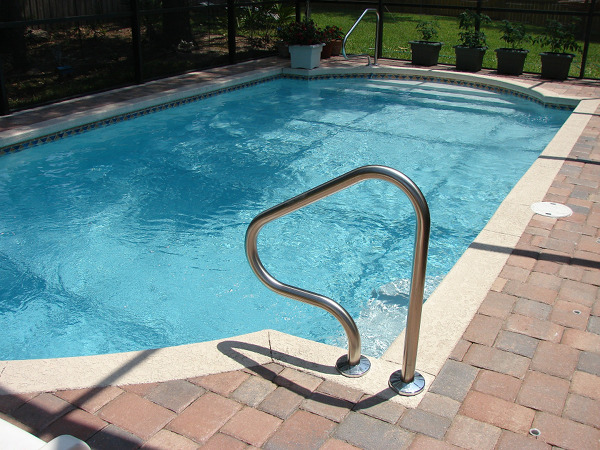
Reviewed by Andrada Simion, Master of Science in Chemistry
- Cyanuric acid (or pool stabilizer) is necessary to keep chlorine in your pool intact and (as its name suggests) keep it at a stable level, but its short-term effects nearly max out at less than 50 parts per million (with even 10-20ppm being over 85% as effective as that). Going higher renders your chlorine virtually ineffective unless you add much more of it (plus other chemicals to balance it out).
- Often the simplest, lowest-risk and cheapest method to reduce it is to drain a fraction of your pool then fill it back up again, draining just enough that the concentration is down to the desired level after refilling.
- If a lot of water needs to be drained you should drain and refill around a fifth of the pool at a time and repeat as necessary, but after each refill the new and existing water should be mixed up completely before the next round so that you’re not just throwing out fresh water.
- If you have an outdoor pool and it happens to be the wet season leave any covers off (while making sure you don’t compromise on safety or run afoul of local pool safety laws) so that the rain can lower the concentration, both by diluting it and through overflow.
- Note that even after reduction it’s possible for cyanuric acid that has soaked into the plaster finish, calcium deposits or filters to seep back out and raise it again.
- If you use stabilized chlorine consider using a pure version instead when cya levels are too high – a bit like using pure coffee powder instead of premixed coffee because your mug already has some sugar in it. This especially applies if most of your water loss is through evaporation as stabilizer doesn’t evaporate while chlorine does (this is in addition to all the other things that eat away at the chlorine, most of which don’t touch cya at all).
Now onto other (and possibly more expensive) methods:
- Melamine can be used (you will need about 1.33 ounces of melamine for a 1ppm reduction per 1000 gallons) but it will create solid but microscopic residues in the process of mixing/reacting with (and thus reducing) cyanuric acid that needs to be removed using very fine filters. Keep in mind that your pool will be dangerous until this residue is removed (multiple studies have found that ingestion of both of the above substances together caused kidney damage and/or failure in rats and cats) and it can also stick to and blemish the pool.
- There are also newer proprietary products that do the job without leaving any residue.
- Reverse osmosis will also remove cya (but also all other chemicals) but it’s not something that’s practical for the average joe to do – there are dedicated services that do it for you and can end up being cheaper in areas where water is expensive.
- Activated carbon also works – according to research it is more effective for reducing already-low levels (rather than high concentrations), and works better in lower temperatures and if the activated carbon is moved around the water rather than just letting it sit still. Unfortunately it also gobbles up chlorine which needs to be replaced.
Using a combination of all the methods covered could end up being ideal depending on the circumstances.